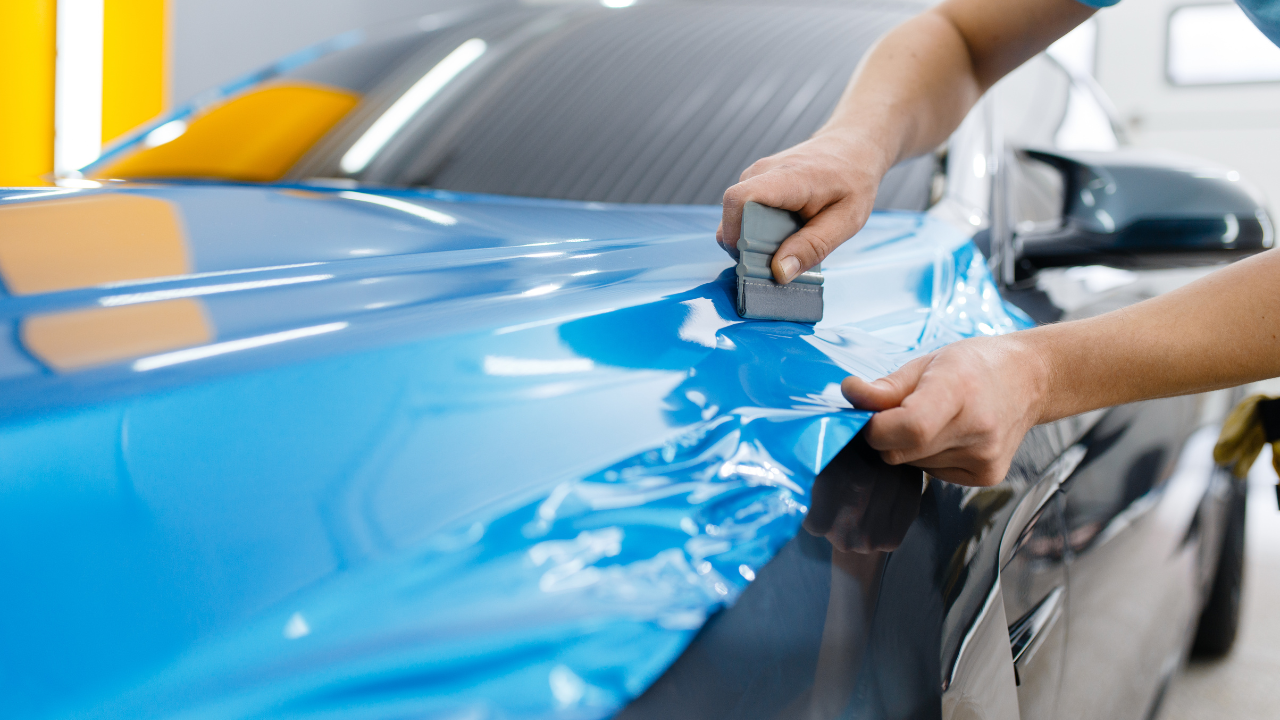Applying Car Paint Protection Film (PPF) to your car is a popular choice among car owners in the UAE due to the harsh environmental conditions as a protective layer for your car's paint. However, despite its protective benefits, PPF comes with several drawbacks that are often overlooked. Here, we discuss ten cons of applying PPF on your car in the UAE to help you make an informed decision.
1. High Initial Cost

One of the primary drawbacks of PPF installation is the high initial cost. Installing high-quality PPF can be quite expensive, with costs varying based on the vehicle size and coverage area. This can represent a significant investment for some car owners, especially when considering that full coverage of a vehicle can run into thousands of dirhams.
Why It’s Expensive
The cost is driven by the material quality and the expertise required for installation. Premium Paint Protective Film or PPF products offer superior protection and longevity but come at a higher price point. For many, this upfront cost can be a deterrent.
2. Professional Installation Required

Professional installation is essential for achieving the best results with PPF. This is not a DIY task; improper installation can lead to bubbles, wrinkles, and peeling. Such issues undermine the protective benefits of installing PPF and can necessitate costly reapplication.
Risks of Poor Installation
If not installed correctly, PPF can trap air bubbles and debris, which can lead to unsightly blemishes and reduced effectiveness. This makes finding a skilled professional crucial, adding to the overall expense and complexity of the process.
3. Potential for Yellowing
Over time, some PPFs may yellow due to prolonged exposure to UV rays and pollutants, particularly under the intense UAE sun. This discoloration can make the car appear aged and less attractive, detracting from its aesthetic appeal.
Why Yellowing Occurs
The yellowing is usually a result of the film's chemical reaction with UV light and environmental contaminants. While some modern films are treated to resist yellowing, not all products offer this protection, leading to potential aesthetic issues.
4. Limited Lifespan
Despite its durability, PPF typically lasts 5-10 years before needing replacement. This limited lifespan adds to the vehicle's long-term maintenance costs, as car owners must factor in periodic replacement to maintain optimal protection.
Factors Affecting Longevity
The lifespan of PPF can be influenced by several factors, including the quality of the film, the environmental conditions it is exposed to, and the level of care it receives. Harsh climates like that of the UAE can shorten its effective lifespan.
5. Not Completely Damage-Proof

While PPF offers excellent protection against minor damages, it is not invulnerable. Severe impacts, deep scratches, or prolonged harsh environmental exposure can still penetrate the film and damage the underlying paint.
Limitations of Protection
PPF is designed to absorb minor abrasions and contaminants, but it cannot withstand heavy damage. Understanding its limitations is crucial for setting realistic expectations about the level of protection it can provide.
6. Difficult Removal Process

Removing PPF is a labor-intensive and time-consuming process. Incorrect removal can damage the underlying paint, leading to additional repair expenses. This makes the removal process a critical consideration for car owners.
Challenges of Removal
The adhesive used in PPF can bond strongly to the car’s paint, requiring careful and skilled removal to avoid damage. This often necessitates professional services, adding to the overall cost and inconvenience.
7. Incompatibility with Certain Paints

Some aftermarket or poorly applied factory paints may not adhere well to PPF, causing adhesion issues and potential damage during removal. This can lead to peeling or flaking paint when the film is removed.
Identifying Compatible Paints
Before applying PPF, it’s essential to ensure that the car’s paint is compatible. Factory paints typically perform better, while custom or aftermarket paints may pose risks of poor adhesion.
8. Maintenance of the Film
Although PPF reduces the need for frequent washing, it still requires specific maintenance to prevent stains and maintain clarity. Special cleaning products and techniques are often recommended to keep the film in optimal condition.
Maintenance Requirements
Regular maintenance involves using non-abrasive cleaning products and techniques to avoid damaging the film. Neglecting proper maintenance can lead to stains and diminished clarity, impacting the film’s appearance and performance.
9. Potential for Edge Lifting

The edges of PPF can sometimes lift, especially in high-stress areas or if not installed correctly. This can allow dirt and debris to accumulate underneath, potentially causing scratches and other damage to the car’s paint.
Preventing Edge Lifting
Proper installation by a skilled professional can minimize the risk of edge lifting. However, high-stress areas such as door edges and hood lines are particularly susceptible, and ongoing vigilance is required to address any lifting promptly.
10. Aesthetic Concerns

Even with professional installation, the edges of PPF can be visible, which might be undesirable for car owners who prefer a seamless look. This can detract from the car’s overall aesthetic, especially if the film is not color-matched or if edges are prominently displayed.
Balancing Protection and Aesthetics
While the primary purpose of PPF is protection, the visual impact cannot be ignored. Car owners need to weigh the benefits of protection against potential aesthetic compromises, especially in high-visibility areas of the vehicle.
Applying Paint Protection Film (PPF) to your car in the UAE is popular due to harsh environmental conditions. While PPF offers benefits like UV protection, minor scratch resistance, and self-healing properties to protect your car cosmetically, consider the potential drawbacks: high initial cost, need for professional installation, yellowing, limited lifespan, and not being completely damage-proof. It can also be difficult to remove, may not be compatible with certain paints, requires specific maintenance, can experience edge lifting, and might have aesthetic concerns.


